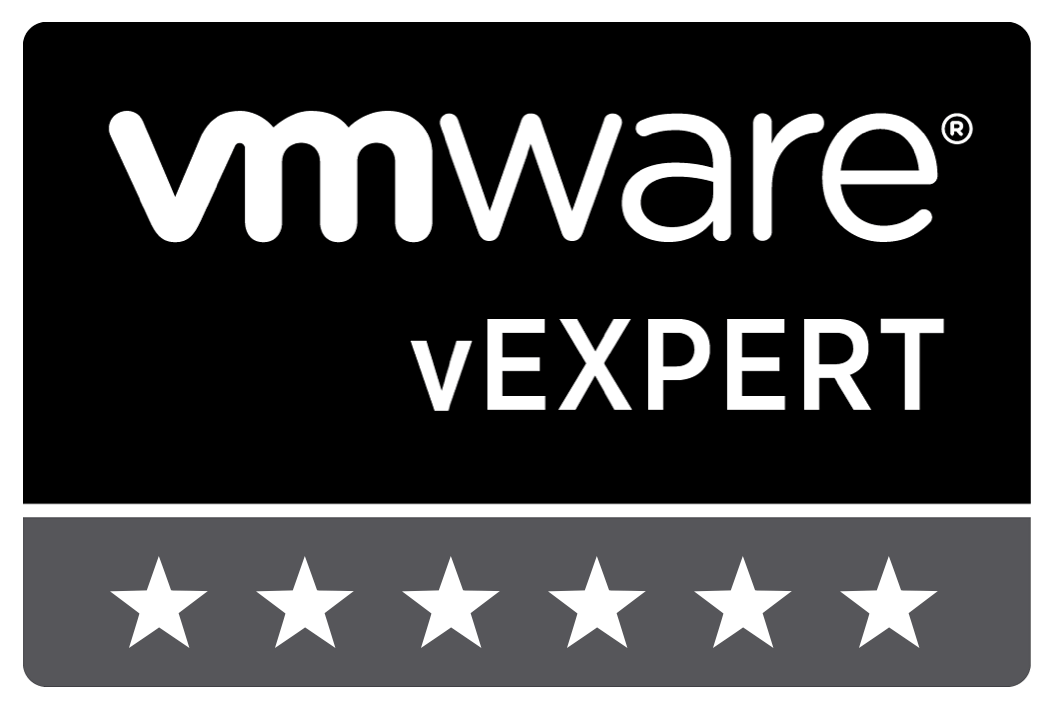[VMUG Austria] PowerCLI 101
![[VMUG Austria] PowerCLI 101](https://vnote42.net/wp-content/uploads/2018/11/powercli-e1543442429700.png)
This is the second part of the guide line of my VMUG session of PowerCLI 101. In first part I focused on PowerShell basics.
PowerCLI Installation
Since version 6.5.1.5 of PowerCLI it is just available on Microsoft PowerShell Gallery. Until than it was a separate download on VMware pages. The advantage of PowerShell Gallery is that modules can be installed by using PowerShell command:
install-module
To use this you need an current version of PowerShell like 5.1. You can show your version by running
(get-host).version
To list already installed VMware modules on your PowerShell host, run:
get-module vmware* -ListAvailable
If your version of PowerCLI is older than 6.5.1.5 you have to uninstall it before you can install a version from PowerShell Gallery. To query versions in PowerShell Gallery run:
find-module vmware.powercli find-module vmware.powercli -AllVersions | select name, version, publisheddate
First command shows only latest version. Second shows all available version.
To install PowerCLI use these command:
install-module vmware.powercli -allowClobber
Option “allowClobber” allows installing modules including cmdlets with names that are already installed on the host. If your host does not have access to internet, install PowerCLI on a host that has. Use this command to export module:
Save-Module -Name VMware.PowerCLI -Path C:\PathToDestination\
To update PowerCLI to current version – when installed version already from PowerShell Gallery:
Update-Module vmware.powercli
After PowerShell is installed, it has to be imported in current session to use it. This is done with the command:
import-module vmware.powercli
Since latest versions and Windows 10 and Server 2016 it is necessary to configure certificate handling in PowerCLI. Otherwise it is not possible to connect to vCenter or host using untrusted certificates.
Set-PowerCLIConfiguration -InvalidCertificateAction Ignore -Scope Session
Get help
There are build-in cmdlets in PowerShell to get help. The following I use more often.
Get-Command Get-Command -Module VMware.VimAutomation.Core Get-Command -Module VMware.VimAutomation.Core get-*
Cmdlets:
1: list all available cmdlets – if module is installed or not
2: list all cmdlets of a specific module – in this example VMware.VimAutomation.Core
3: list all cmdlets, beginning with “get-” of a specific module.
To get more information of a cmdlet, use:
Get-Help Get-Help Get-VM Get-Help Get-VM -Examples
1: Shows help for get-help
2: Shows information of cmdlet Get-VM
3: Shows examples for cmdlet Get-VM
Object Cmdlets
There are a few Cmdlets that can just be used to pipe something in. Three of them are very common.
Where-Object
With this cmdlet, it is possible to filter within the result of a cmdlet. This is useful if cmdlet itself does not offer the option to filter. This is to prefer.
Get-VM
Get-VM | Where-Object {$_.MemoryGB -gt 8}
1: Show all VMs
2: Show all VMs with more than 8GB configured memory.
You can see in this example that variable $_ is used to refer to objects came from pipe.
Select-Object
When running a PowerCLI cmdlet a pre-defined set of columns are shown. This does not mean there isn’t more to see. Using Select-Object, you can select columns to show. A command I use very often:
Get-VMHost | Select-Object Name, Version, Build
Sort-Object
It is easy to imagine what this cmdlet does. Here two examples:
Get-VM | Sort-Object Name Get-VM | Sort-Object Name -Descending
1: Show all VMs in ascending order which is the default order.
2: Show all VMs in descending order.
PowerCLI Usage
To use PowerCLI you need to connect to a vCenter instance or a single host. To do this use this command:
Connect-VIServer vCenter
To show how to use PowerCLI, I show how to mange VM port groups on standard vSwitches. This is something time-consuming and error-prone. Automating this tasks by using PowerCLI is a way to overcome this – without the need for any additional licences.
At first we take a look at the vSwitch configuration of a host managed by vCenter:
Get-VMHost Get-VMHost hostname | Get-VirtualSwitch Get-VMHost hostname | Get-VirtualSwitch -name vSwitch1 | Get-VirtualPortGroup
1: Shows all ESXi hosts, managed by vCenter.
2: Shows all vSwitches of host hostname.
3: Shows all port groups of vSwitch1 of host hostname.
Now we add a new port group to this vSwitch. In our example we call it “DMZ” and use VLAN ID 999. As you can see, cmdlet New-VirtualPortGroup gets vSwitch to create portgroup as input from pipe:
Get-VMHost hostname | Get-VirtualSwitch -name vSwitch1 | New-VirtualPortGroup -Name "DMZ" -VLanId 999
To change VLAN ID – to 777 in this example – of an existing port group, run:
Get-VMHost hostname | Get-VirtualSwitch -name vSwitch1 | Get-VirtualPortGroup -Name "DMZ" | Set-VirtualPortGroup -VLanId 777
To remove a port group, tun:
Get-VMHost hostname | Get-VirtualSwitch -name vSwitch1 | Get-VirtualPortGroup -name "DMZ"| Remove-VirtualPortGroup -Confirm:$false
Use option “-Confirm:$false” to avoid PowerShell to ask if you are sure to do this.
This examples should illustrate how to use PowerCLI. We did all task for a specific host. But how to do this for, lets say all hosts of a cluster? Exactly here we can see the power of PowerShell respectively PowerCLI. We just need to select the hosts we want to perform theses task for and pipe them to the rest of our cmdlets. For example, we want to do this VLAN management for all hosts in cluster “Main-Cluster”. These commands can be used:
Get-Cluster "Main-Cluster" | Get-VMHost | Get-VirtualSwitch -name vSwitch1 | New-VirtualPortGroup -Name "delete" -VLanId 999 Get-Cluster "Main-Cluster" | Get-VMHost | Get-VirtualSwitch -name vSwitch1 | Get-VirtualPortGroup -Name delete | Set-VirtualPortGroup -VLanId 777 Get-Cluster "Main-Cluster" | Get-VMHost | Get-VirtualSwitch -name vSwitch1 | Get-VirtualPortGroup -name delete | Remove-VirtualPortGroup -Confirm:$false
If tasks have to be done for alle hosts, managed by vCenter, start command line with Get-VMHost.
Tips and Tricks
A way to check if a download is error-free, checksums are very useful. With PowerShell, you can easily calculate them for files. For example MD5-checksum:
Get-FileHash -Algorithm MD5 file.txt
When you generate an important list and want to send it per mail you can export the list to an HTML file. For example:
Get-VM | ConvertTo-Html | Out-File -FilePath c:\temp\out.html
Often the default output list cuts off width of columns. To overcome this, try Format-Table with option AutoSize
Get-VMHost | Format-Table -AutoSize
When you are familiar with shell in ESXi you probably know esxcli. This command does not know tab-completion or shortening of input. With PowerCLI you get tab-completion! To get information, see this example:
$esxcli = Get-VMHost kbcesx01.kbc.lab | Get-EsxCli $esxcli. # try tab $esxcli.system.hostname.get()
1: Sets $esxcli for a host
2: Try tab-completion
3: complete command
To see all information a cmdlet can show (in first instance) you can use Select-Object:
Get-VMHost Get-VMHost | Select-Object *
1: Show pre-defined data set of Get-VMHost.
2: Show all possible data-columns. Using “.” you can dive deeper…
Links
- Offline installation of PowerCLI
https://blogs.vmware.com/PowerCLI/2018/01/powercli-offline-installation-walkthrough.html - About documentation of PowerCLI
https://blogs.vmware.com/PowerCLI/2019/02/documentation-walkthrough.html - Installing PowerShell and PowerCLI on Linux
https://cybersylum.com/2019/04/07/installing-powershell-and-powercli-on-linux/


